Abstract
1. Experiments have been carried out in lactating goats milked hourly to assess the value of this technique in studies of milk secretion.
2. On refeeding 24 hr-fasted goats there was an increase in arterial concentration and mammary uptake of volatile fatty acids within an hour, but little increase in hourly milk and lactose yield until the mammary uptake of glucose had also increased (after 2-3 hr).
3. Intravascular infusions of acetate had no effect on milk secretion in 24 hr-fasted goats but glucose infusions increased milk yield by 62 ± 5% and lactose yield by 87 ± 12% within 3 hr, with no effect on fat secretion. The addition of acetate or acetate plus amino acids had no more effect than glucose alone.
4. The yield of milk and lactose could be reduced within an hour by insulin (2 u./kg I.V.) and this was prevented or reversed by injecting glucose. In one goat, where in spite of a fall in blood sugar, mammary arteriovenous difference and blood flow did not fall, there was little or no fall in milk yield.
5. In fasted or insulin treated goats an increase in milk and lactose secretion could be obtained within an hour by infusing glucose into the artery of one gland autotransplanted to the neck, which responded before the control gland in situ, thus showing that the effect of glucose is directly on the mammary tissue.
6. In two normally fed goats with a low blood sugar, glucose infusions increased the milk or lactose yield by 30% within 3 hr.
7. It is concluded that frequent milking, using minimal doses of oxytocin, is a valid method of studying factors controlling milk secretion and that, in the lactating goat, the availability of glucose to the mammary gland can be a limiting factor for maximum milk secretion.
Full text
PDF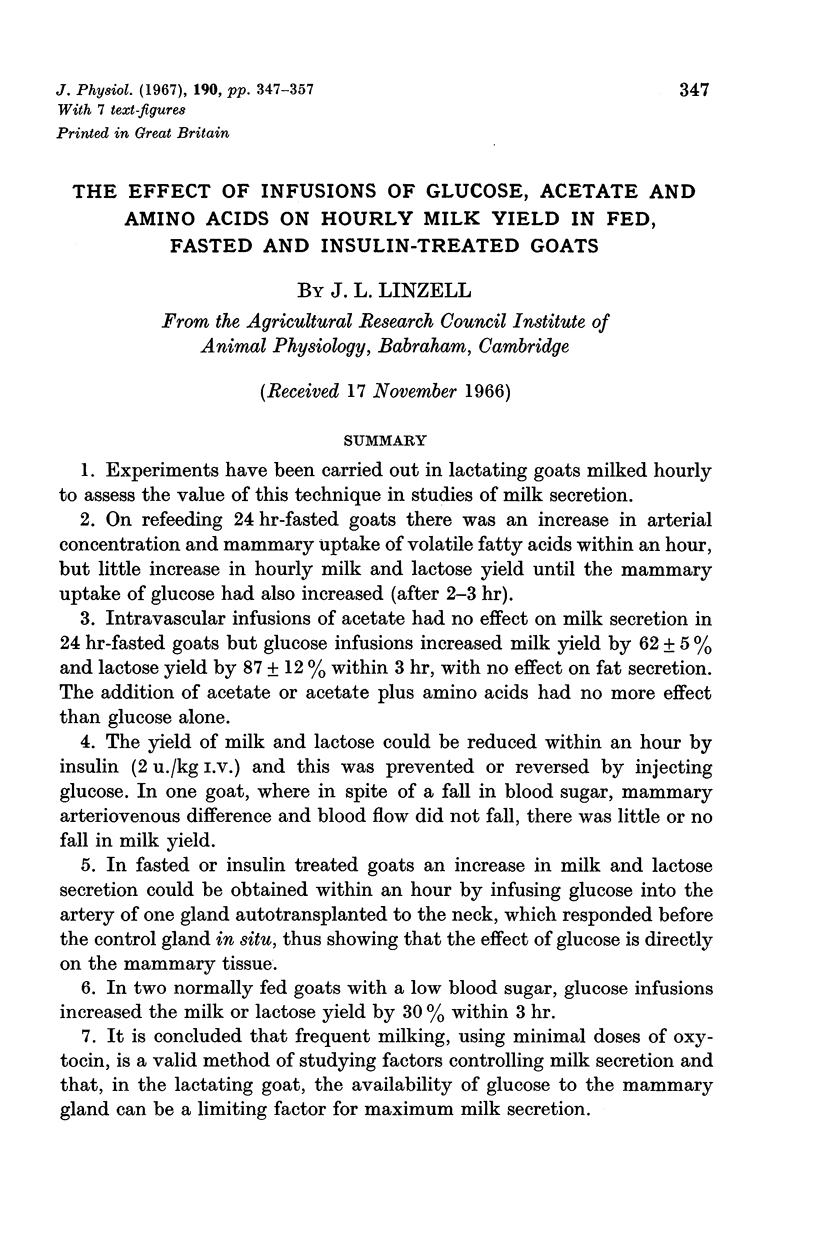
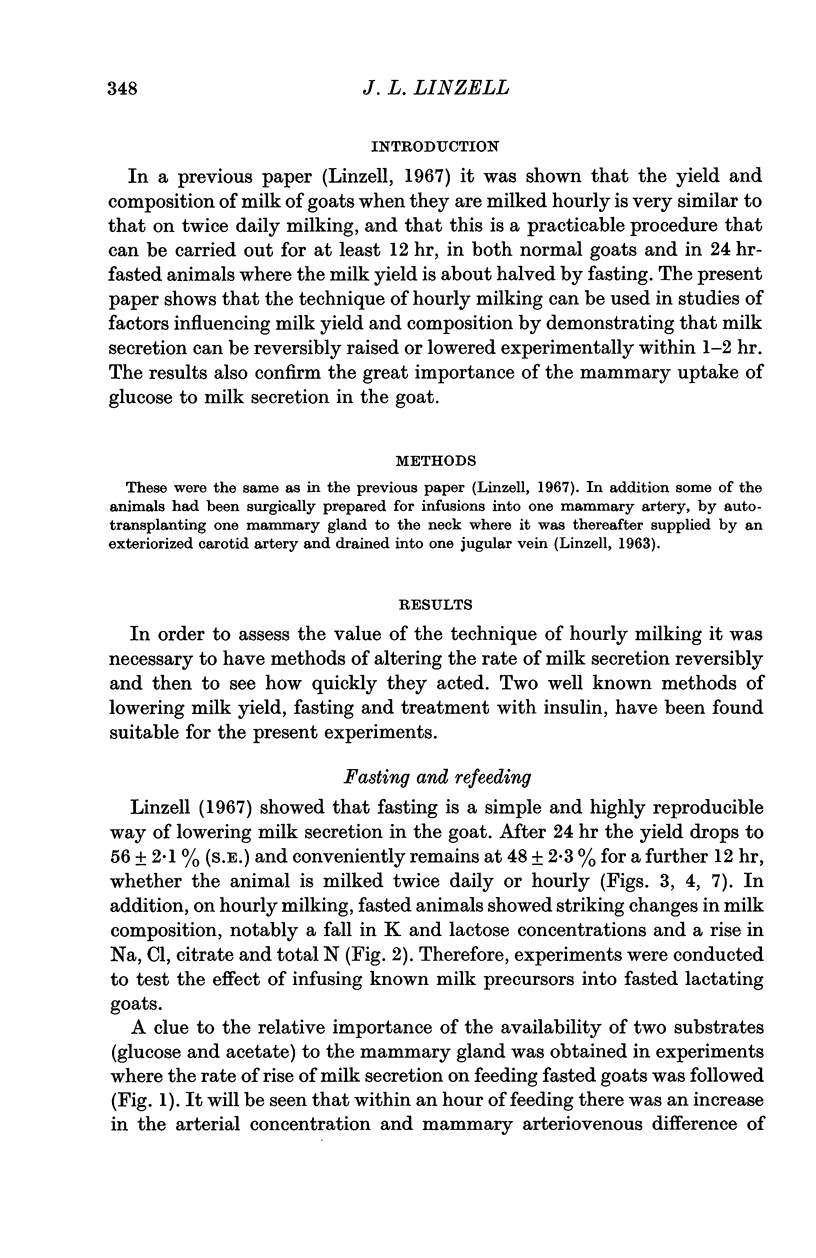
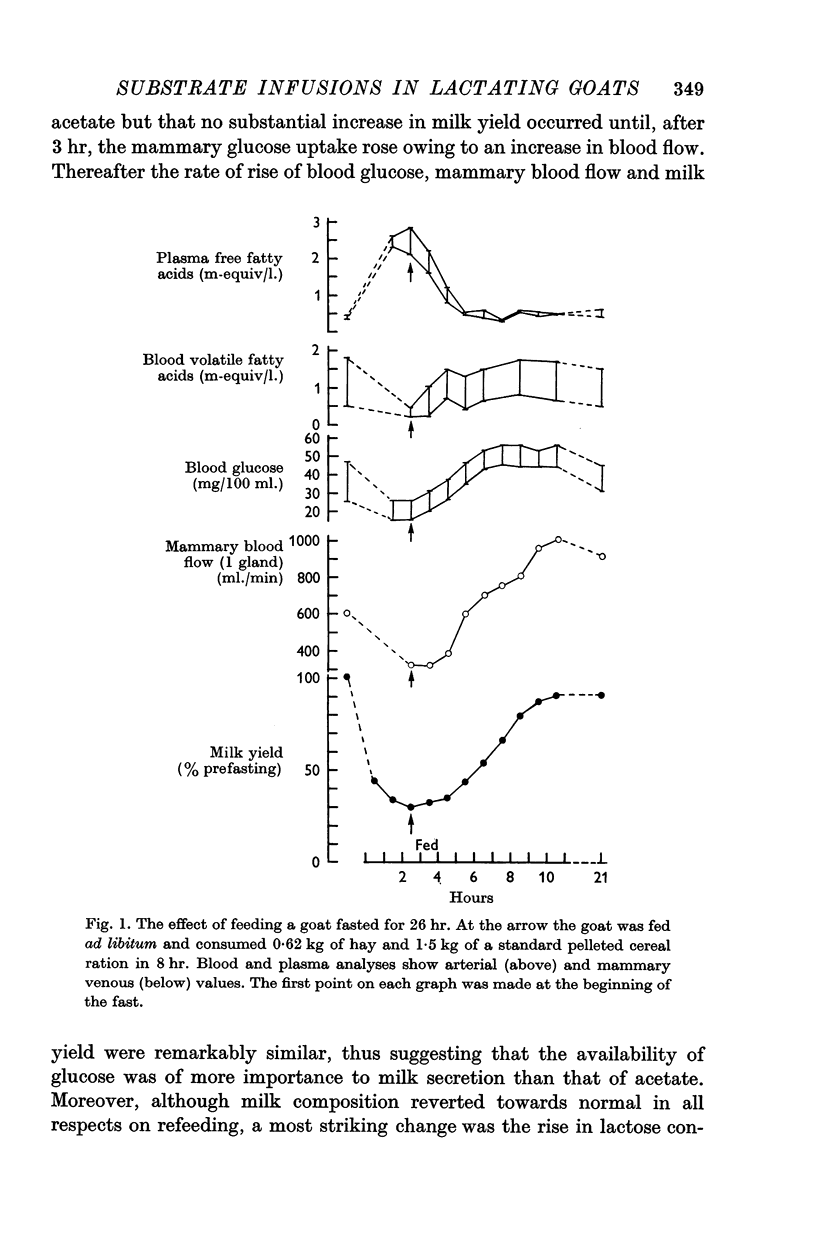
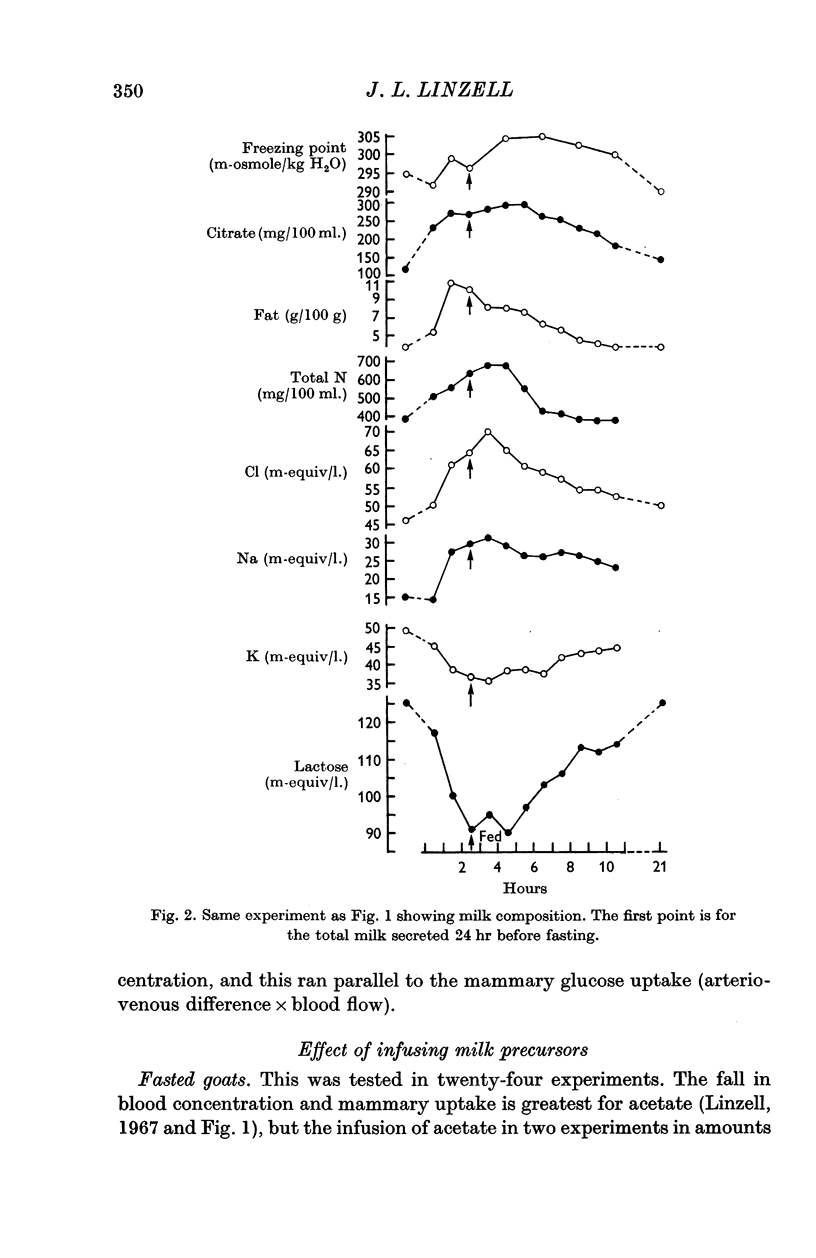
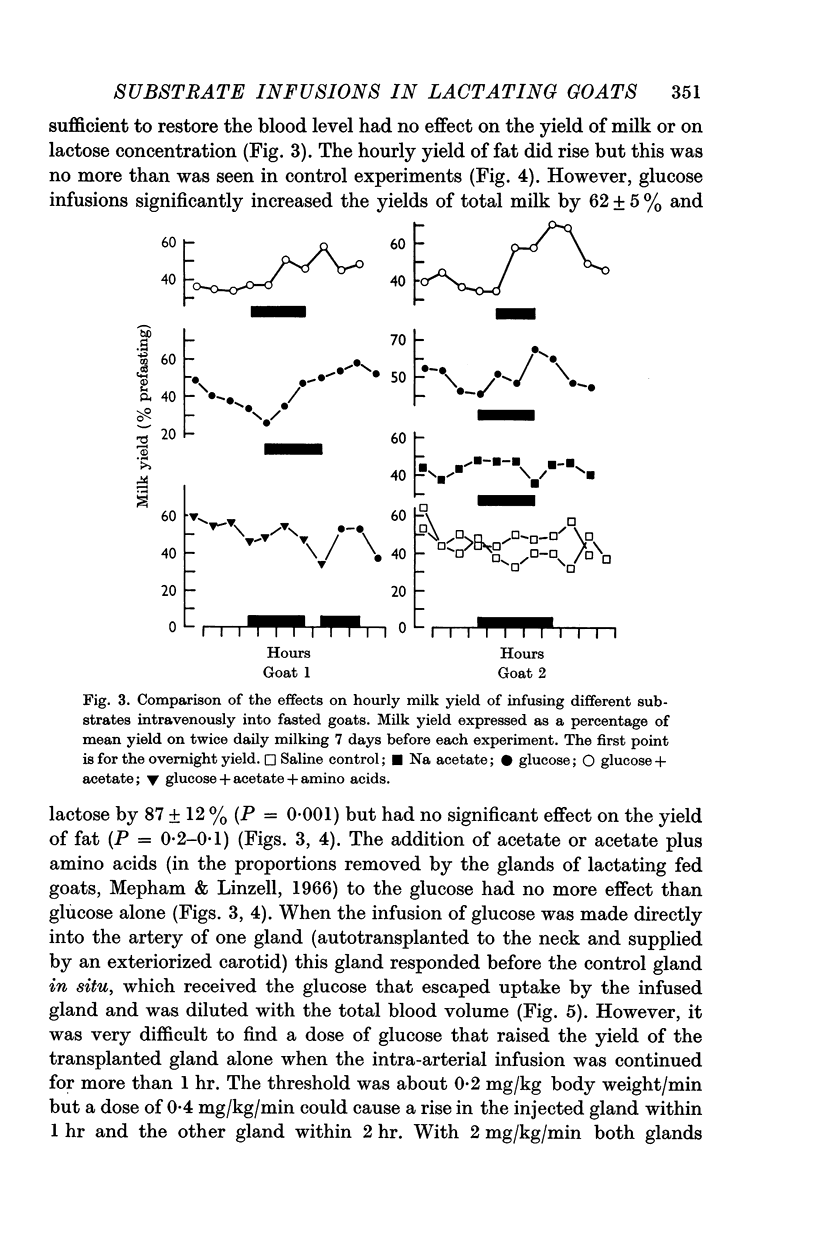
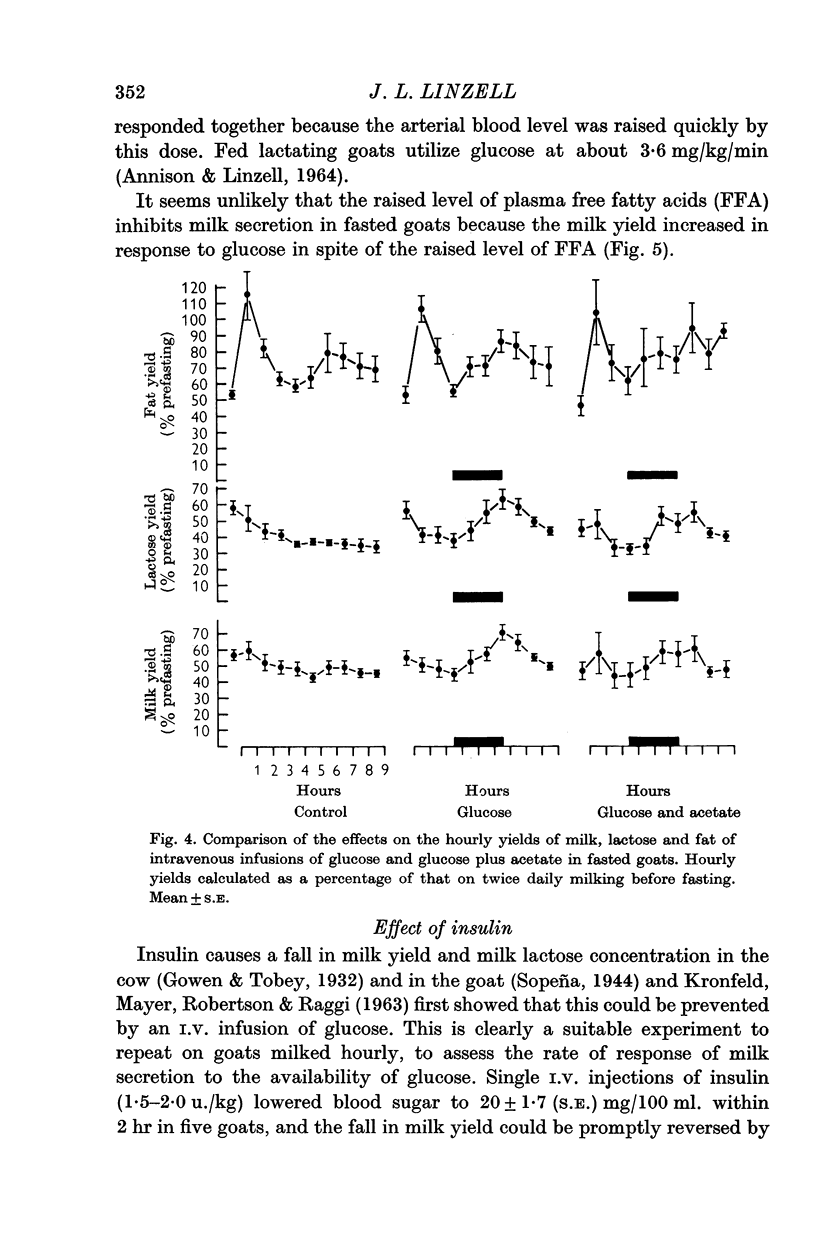
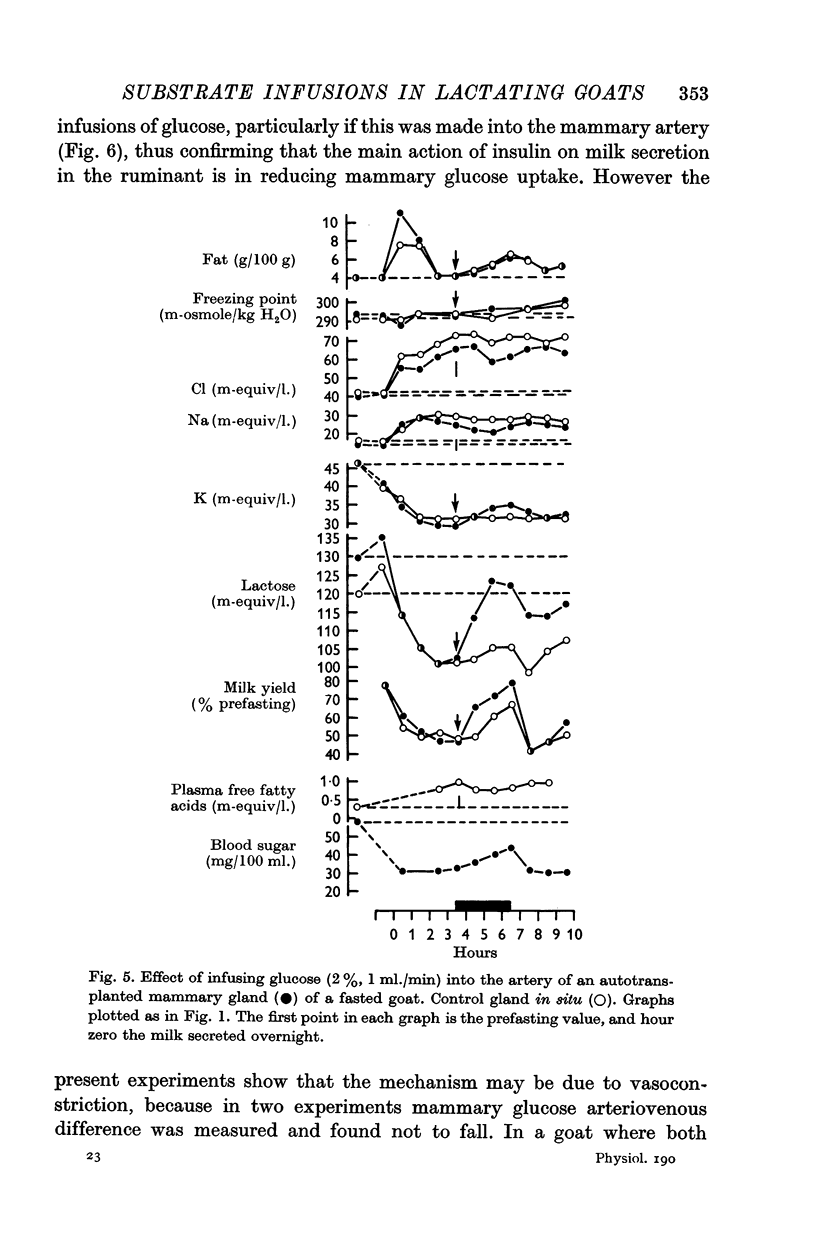
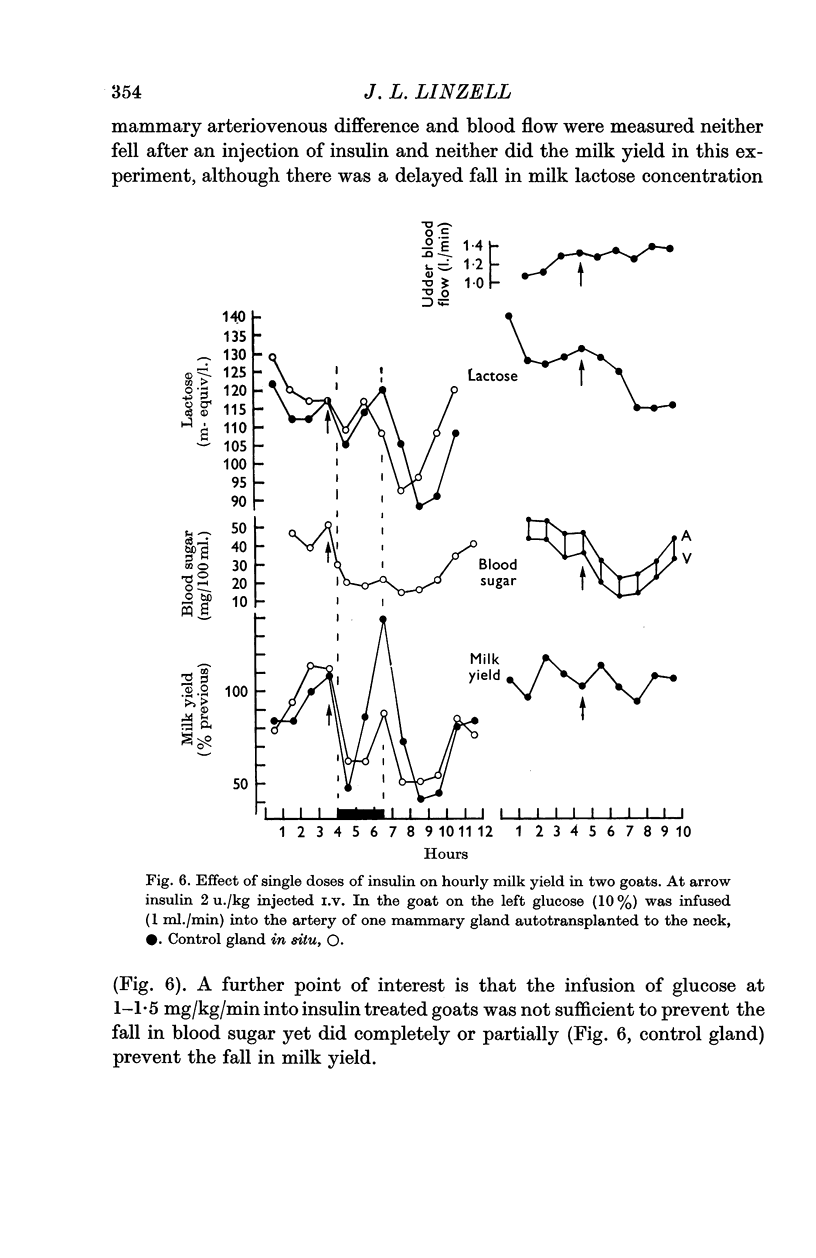
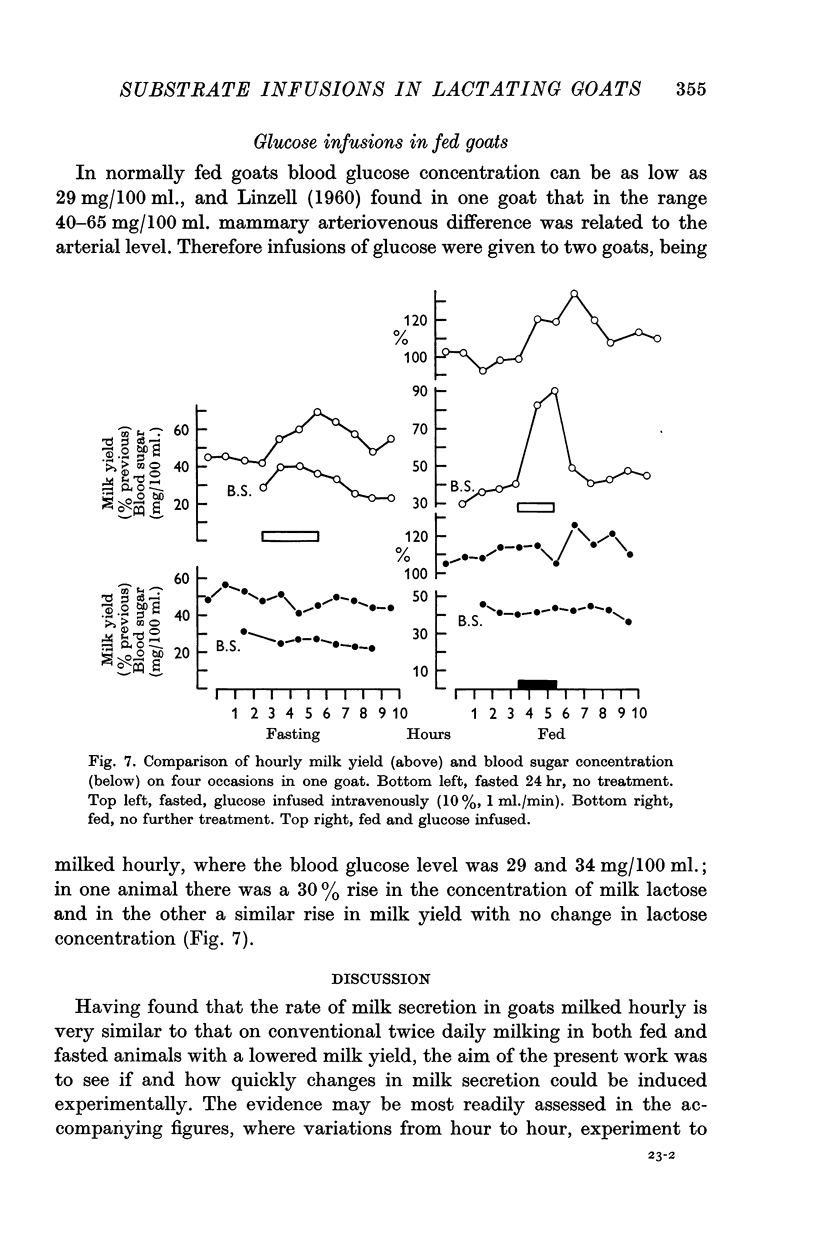
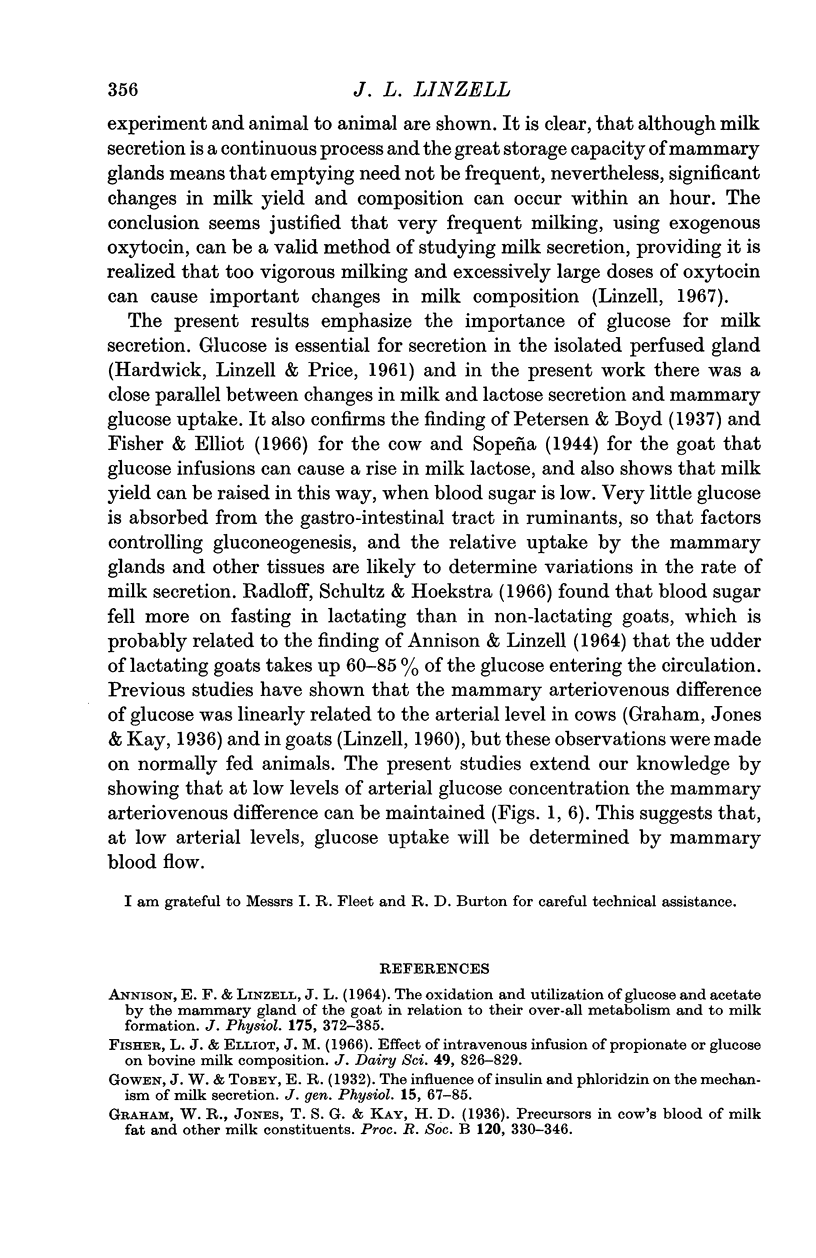
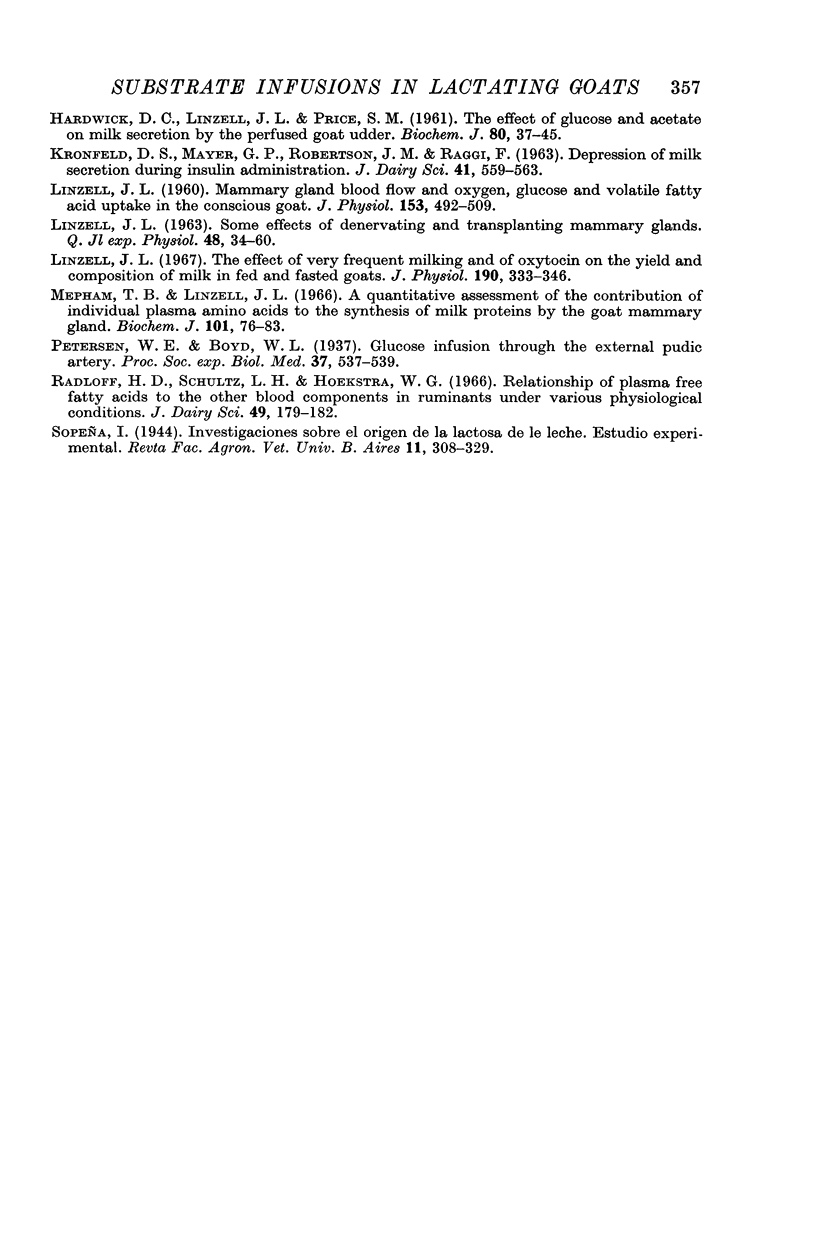
Selected References
These references are in PubMed. This may not be the complete list of references from this article.
- ANNISON E. F., LINZELL J. L. THE OXIDATION AND UTILIZATION OF GLUCOSE AND ACETATE BY THE MAMMARY GLAND OF THE GOAT IN RELATION TO THEIR OVER-ALL METABOLISM AND MILK FORMATION. J Physiol. 1964 Dec;175:372–385. doi: 10.1113/jphysiol.1964.sp007522. [DOI] [PMC free article] [PubMed] [Google Scholar]
- Fisher L. J., Elliot J. M. Effect of intravenous infusion of propionate or glucose on bovine milk composition. J Dairy Sci. 1966 Jul;49(7):826–829. doi: 10.3168/jds.S0022-0302(66)87954-7. [DOI] [PubMed] [Google Scholar]
- HARDWICK D. C., LINZELL J. L., PRICE S. M. The effect of glucose and acetate on milk secretion by the perfused goat udder. Biochem J. 1961 Jul;80:37–45. doi: 10.1042/bj0800037. [DOI] [PMC free article] [PubMed] [Google Scholar]
- LINZELL J. L. Mammary-gland blood flow and oxygen, glucose and volatile fatty acid uptake in the conscious goat. J Physiol. 1960 Oct;153:492–509. doi: 10.1113/jphysiol.1960.sp006550. [DOI] [PMC free article] [PubMed] [Google Scholar]
- Linzell J. L. The effect of very frequent milking and of oxytocin on the yield and composition of milk in fed and fasted goats. J Physiol. 1967 May;190(2):333–346. doi: 10.1113/jphysiol.1967.sp008212. [DOI] [PMC free article] [PubMed] [Google Scholar]
- Mepham T. B., Linzell J. L. A quantitative assessment of the contribution of individual plasma amino acids to the synthesis of milk proteins by the goat mammary gland. Biochem J. 1966 Oct;101(1):76–83. doi: 10.1042/bj1010076. [DOI] [PMC free article] [PubMed] [Google Scholar]
- Radloff H. D., Schultz L. H., Hoekstra W. G. Relationship of plasma free fatty acids to other blood components in ruminants under various physiological conditions. J Dairy Sci. 1966 Feb;49(2):179–182. doi: 10.3168/jds.S0022-0302(66)87821-9. [DOI] [PubMed] [Google Scholar]


